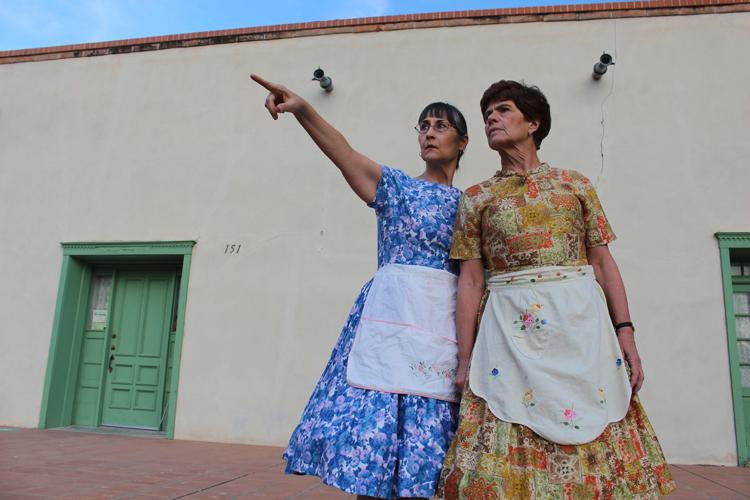In its upcoming production, Borderlands Theater is not staging your typical play. And theatergoers will not experience it in the usual way.
“Barrio Stories” will be presented next month on the grounds of the Tucson Convention Center and the adjoining Sosa-Carrillo-Frémont historic house, interpreted by 41 principal actors, telling the history of the families whose homes, businesses and social centers were buried under the concrete tomb.
Critically, “Barrio Stories” will reclaim the history and place of the once-vibrant heart and soul of Tucson’s downtown Barrio Viejo, largely inhabited by Mexican-Americans but also including Chinese, African-American and indigenous families.
“We are reclaiming our space, reclaiming our place,” said Elaine Romero, an assistant professor at the University of Arizona School of Theatre, Film and Television, one of three playwrights behind “Barrio Stories.” The other two playwrights are Virginia Grise of New York City and Martín Zimmerman of Chicago.
“Barrio Stories” recounts the sad history of how Tucson, in its rush to be seen as a modern, Southwestern convention destination, pushed out longtime residents and business owners over 80 acres, taking with it a rich history from Tucson. In its place the city built the TCC — the concrete tomb — and parking lots, and allowed the development of La Placita Village. Ironically, La Placita is now expected to be torn down for a residential development.
“The real outrage is embedded in this very Tucson story,” said Romero, whose works have been staged in other U.S. cities and abroad.
“Barrio Stories” is based on the award-winning UA Press book, “La Calle: Spatial Conflicts and Urban Renewal in a Southwest City,” by Lydia Otero, an associate professor in the University of Arizona’s department of Mexican-American studies, and field research conducted last spring by students from the Trio Upward Bound Program at Pima Community College’s Desert Vista Campus with instructor Milta Ortiz, a playwright and outreach director for Borderlands.
The production of “Barrio Stories” is large in scale and scope.
In addition to the principal actors, more than 70 extras from local schools and community organizations will participate in the play, as will four puppets, said Marc David Pinate, Borderlands producing director and director of “Border Stories.” The ages of the participants range from 6 to 83. The production also includes dozens of volunteers, and Borderlands is looking for more.
Pinate said one of the challenges was to make the play accessible to theatergoers.
The two-hour-plus production will take people on a walking tour along three main stages. Audiences will encounter “fragments” — theatrical installations between the main-stage performances. The theatrical event culminates in an audience interactive pachanga, or party.
Theatergoers will be assisted by volunteers and maps, and loudspeakers will broadcast instructions on the four days, March 3-6. There will be an audio booth where audience members can record their reactions to the play and their personal stories of growing up in the barrio.
Pinate called it a “promenade style staging” where viewers walk through the environment, rather than sit inside a theater.
Otero said, “It takes a village to reframe and redirect history.”
It also takes money.
Borderlands received $63,000 from MetLife Foundation/Theatre Communications Group, a UA Faculty Collaboration Grant from the Confluencenter for Creative Inquiry, American Library Association and Arizona Humanities.
One of Borderlands’ goals is to widen the theater-going audience. To make it affordable, there is a suggested $10 donation, but Pinate said no one will be turned away. In addition, Borderlands started an Indiegogo fundraising campaign to pay for 1,000 school students to see the play.
“To get more Latinos to the theater, we need to make it about them in a place they once claimed,” Pinate said.
Romero hopes that Barrio Stories’ viewers and participants will leave with an understanding of a critical piece of Tucson’s urban history and are inspired to become active in reclaiming local history.
“The cement does not wash away our inheritance and our ownership,” she said.





